Sometime ago I talked about deploy emt conduit throughout the house and inside walls as risers going up to the ceiling and attic. It is my understanding that the the romex is not going to be inside a conduit 100% of the time, one can fill it up to 100% (100% filling rate). Using romex gives the flexibility of transition from conduit to no-conduit situations(small segments, unpractical situations for conduit, etc). In some situations, specially whereas 3 wires are required in a 20 amps circuits and plus which will travel inside conduit all the time, I will likely use THHN wires (especially because I don't intend to use ¾ emt conduit).
Using the emt as a riser from an outlet box inside walls I plan to use the following configuration:
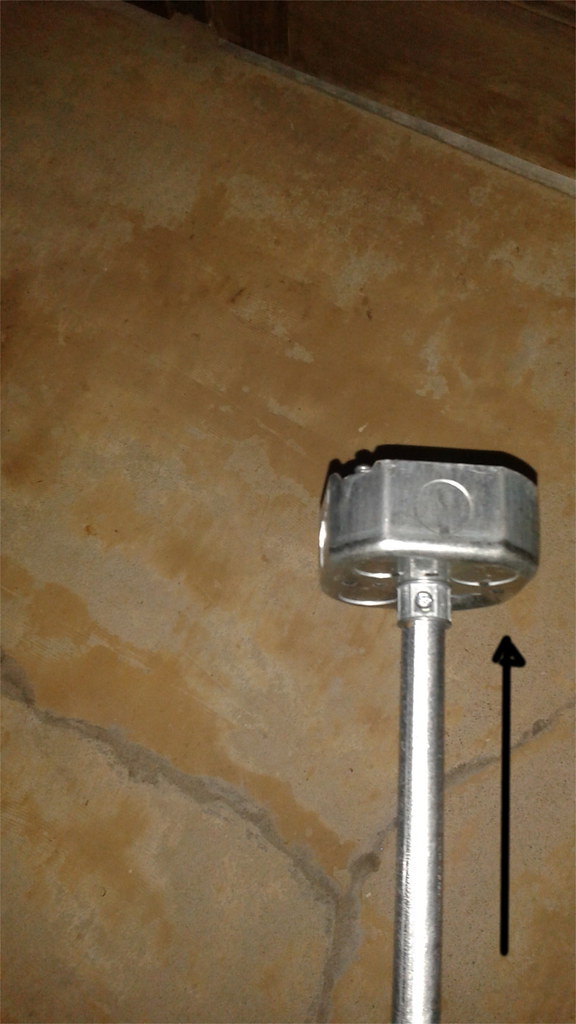
by which instead of bending the conduit in the attic (which would a nightmare), once the conduit enters the attic through the joist it will connected to a junction box right away.
The following the pic shows from behind a conduit connected to a future outlet box in the kitchen area with an emt rising to the ceiling. And since it is inside the emt conduit which is affixed to the box, I was wondering whether or not the requirement for straps/clamps are. I heard that in some situations the requirement would be: position straps within 3 ft. of each box and within 10 ft. thereafter. Also, since the knockout in the box and the hole above in the ceiling are well aligned, there were no need to offset the conduit; but the emt conduit are not making direct contact with the stud which then would make it difficult to use straps in this case.
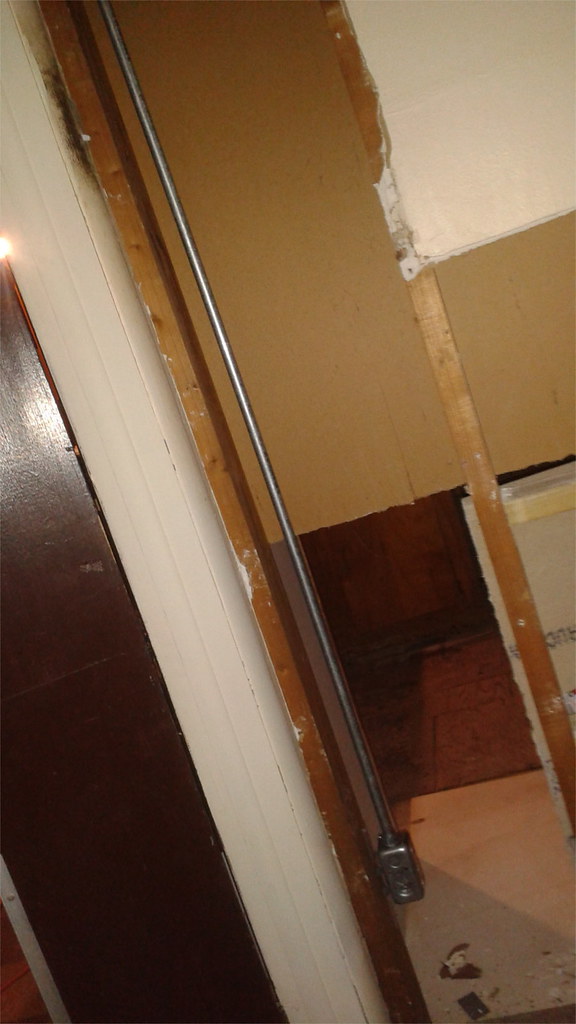
In the basement, I am also using conduit 95% of the time, as shown below:
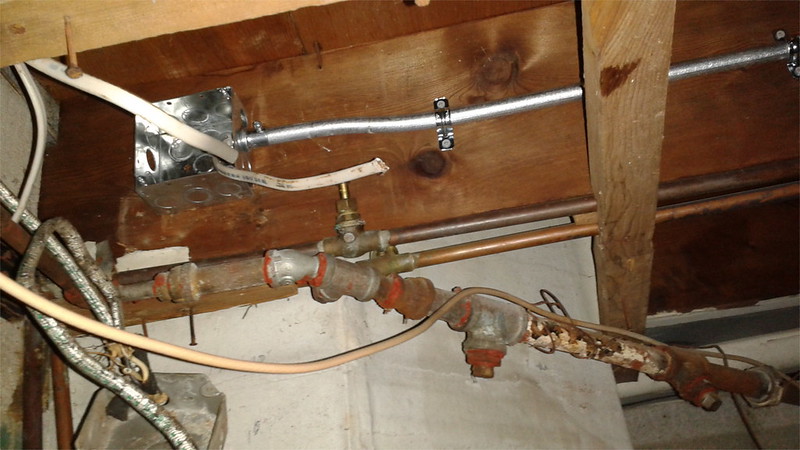
There is a situation whereby the nm-b exist the "wall" throught a hole directly to a box (which will have a switch and outlet) through its back (back knockout hole) but then there is not room for a fitting (which does not seem necessary due to the fact that the hole in the wall is much smaller than the knockout , but in any case I used an anti-short bushing to protect it. Would that be ok codewise? I was wondering whether or not these small plastic anti-short bushings are required or not (it seems prudent to use them, specially with bx/mc conduit)
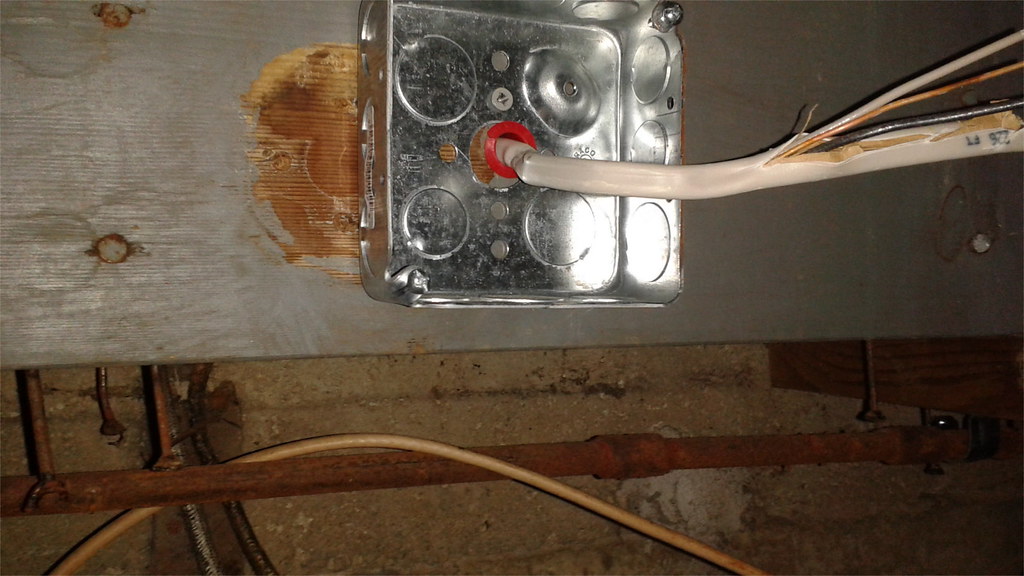
thks!
Using the emt as a riser from an outlet box inside walls I plan to use the following configuration:

by which instead of bending the conduit in the attic (which would a nightmare), once the conduit enters the attic through the joist it will connected to a junction box right away.
The following the pic shows from behind a conduit connected to a future outlet box in the kitchen area with an emt rising to the ceiling. And since it is inside the emt conduit which is affixed to the box, I was wondering whether or not the requirement for straps/clamps are. I heard that in some situations the requirement would be: position straps within 3 ft. of each box and within 10 ft. thereafter. Also, since the knockout in the box and the hole above in the ceiling are well aligned, there were no need to offset the conduit; but the emt conduit are not making direct contact with the stud which then would make it difficult to use straps in this case.

In the basement, I am also using conduit 95% of the time, as shown below:

There is a situation whereby the nm-b exist the "wall" throught a hole directly to a box (which will have a switch and outlet) through its back (back knockout hole) but then there is not room for a fitting (which does not seem necessary due to the fact that the hole in the wall is much smaller than the knockout , but in any case I used an anti-short bushing to protect it. Would that be ok codewise? I was wondering whether or not these small plastic anti-short bushings are required or not (it seems prudent to use them, specially with bx/mc conduit)

thks!






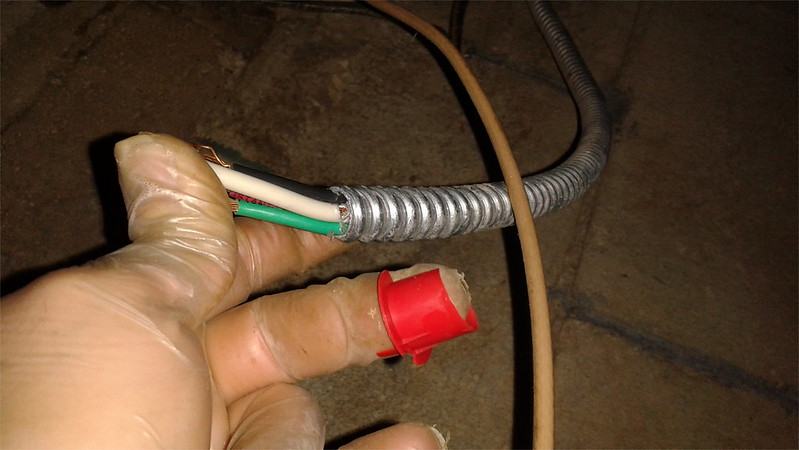
 :
: